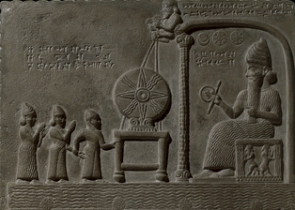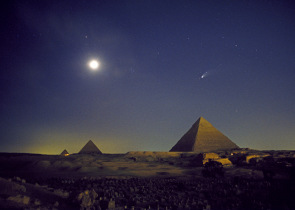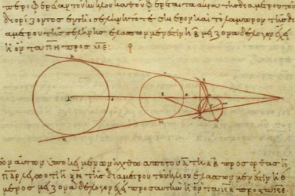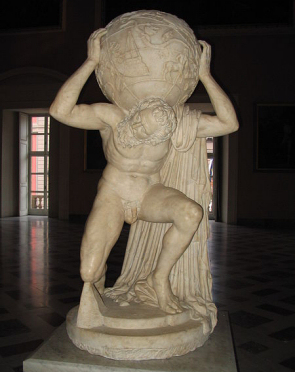A history of astrometry - Part I
Mapping the sky from ancient to pre-modern times
Archaeological records show that astronomy is one of the first natural sciences developed by early civilisations all over the globe. Ancient astronomers could perform only limited investigations of the sky, using rudimentary aids to the human eye. Even so, humankind had already begun the measurement of the positions of celestial bodies, making astrometry – the science of charting the sky – one of the oldest branches of astronomy.
Curiosity alone did not inspire the earliest astronomers: astronomy and astrometry were practical sciences too. Monitoring the motions of stars and planets in the sky was the best tool to track time, which was fundamental for agriculture, religious rituals and navigation.
The first documented records of systematic astronomical observations date back to the Assyro-Babylonians around 1000 BCE. From this cradle of civilisation in Mesopotamia – in the southern part of present-day Iraq – astronomers had built up knowledge of the celestial bodies and recorded their periodic motions. But they had no idea how far away the stars and the planets were.
Ancient Greece
It was much later, in the third century BCE, that Greek astronomers first attempted to use astrometry to estimate cosmic scales. Among other sciences, astronomy flourished at Alexandria, a Greek colony off the northern coast of Egypt, with a renowned library and museum. The dominant view of the cosmos among scientists was geocentric, with the Earth being at the centre of the Universe and everything else revolving around it, but there were some who were edging closer to the truth.
Aristarchus of Samos was one of the few supporters of the heliocentric system, identifying that the Earth travelled around the Sun rather than the other way around. A proficient mathematician, he tried to assess the relative distance of the Sun and the Moon from Earth, by measuring the angle between them when the Moon appears exactly as one quarter. With the help of trigonometry, he determined that the Sun is 18 to 20 times more distant from Earth than the Moon. He had the right idea, but the measurement was not very precise; current data show that the Sun is about 400 times more distant than the Moon.
The first stellar catalogue
In the second century BCE, the famed Greek astronomer Hipparchus of Nicaea compiled the first stellar catalogue. A record of his work was handed down by Ptolemy, an astronomer writing three hundred years later at Alexandria – by then part of the Roman Empire.
To measure angles in the sky, Hipparchus employed the ancient Babylonian practice, still in use today, of dividing a circle into 360 degrees, and each degree into 60 arc minutes. Hipparchus's catalogue, one of the earliest successful attempts to chart the heavens, lists the positions of 850 stars across the sky with a precision of about one degree (about twice the angular size of the full Moon). He was able to attain this precision exclusively with naked-eye observations and the few instruments available at the time – gnomons, astrolabes, and armillary spheres. Hipparchus also created the magnitude system for describing the brightness of stars, which is still in use today, and studied the relative distance of the Sun and the Moon from Earth.
Progress during the Dark Ages
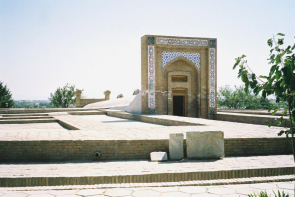 |
| The Ulugh Beg Observatory in Samarkand, Uzbekistan. |
Whilst Europe languished in the Dark Ages, astronomy flourished in Asia and in the Islamic world. Extensive observations were performed in the Chinese and Indian empires, including the compilation of stellar catalogues. In the Islamic world, observations of the sky were accompanied by the study and translation of texts from ancient Greek scientists. Islamic scholars built exquisite astronomical instruments to measure angles in the sky. They improved on the quadrant, a measuring device shaped as a quarter of a circle that was originally proposed by Ptolemy, and invented the sextant, a similar instrument in the shape of one sixth of a circle.
A catalogue of 994 stars was created by Ulugh Beg of the Timurid dynasty in the fifteenth century. Ruling over Central Asia the astronomer and mathematician constructed an enormous sextant with a radius of 36 metres in Samarkand, located in present-day Uzbekistan. Ulugh Beg's catalogue has a precision of slightly better than one degree, comparable to that of Hipparchus's compilation from several centuries before. Ulugh Beg and the many other astronomers that were active in the Islamic world kept the practice of astronomy and astrometry alive, smoothly ushering them into the modern era.
European Renaissance
The flow of discoveries and inventions from other cultures and territories catalysed the revival of science in Renaissance Europe. In astronomy, the rediscovery of Ptolemy's original texts would eventually lead Polish astronomer Nicolaus Copernicus to revolutionise the view of the cosmos, with the shocking revelation that Earth is not the centre of the Universe.
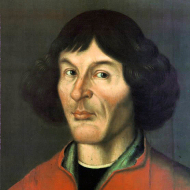 |
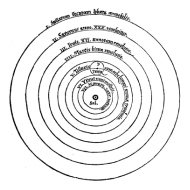 |
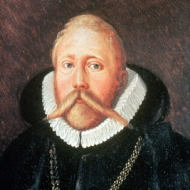 |
| Nicolaus Copernicus portrait | The Copernican System | Tycho Brahe portrait |
Copernicus published his theory of a heliocentric system in 1543, identifying the Sun as the centre of the Universe, with the Earth and the other planets bound to move around it. Although the heliocentric view described planetary motions in a simpler and more orderly fashion than Ptolemy's geocentric system, it would take at least a century before this controversial model became accepted both within and beyond the scientific community.
Even one of astronomy's great minds, Tycho Brahe, rejected heliocentrism. However, from his base in Denmark, Brahe made great strides in observational astronomy. On the island of Hven, which is located in present-day Sweden, Brahe built Uraniborg, the greatest astronomical observatory before the invention of the telescope. With the aid of large quadrants and sextants, he compiled a catalogue with the positions of about 1000 stars. Completed in 1598 and published in 1627, Brahe's catalogue has a precision of about one arc minute – a huge leap forward, and the first major improvement on stellar catalogues that stretched back seventeen centuries.
In search of stellar parallax
The heliocentric system revived the debate about stellar parallaxes. The parallax is an apparent movement of a foreground object with respect to its background owing to a change in the observer's position. Also known as triangulation, this method is used to assess distances to faraway objects on Earth. Astronomers had tried to apply it to determine the distance to the stars, but no baseline on Earth was big enough to detect stellar parallax because of the immense distances involved.
After Copernicus suggested that Earth revolves around the Sun, astronomers realised that it was possible to exploit the much larger baseline offered by Earth's orbit to measure stellar parallaxes. So Brahe pushed towards the observational limits of his time, in search of stellar parallax. Unfortunately, he could not detect it. Incorrectly assuming that stars cannot be so distant that their parallax would not be within the reach of his measurements, Brahe rejected Copernicus's model and proposed his own hybrid system, which incorporated both geocentric and heliocentric features.
There was no way for Brahe to know, at the end of the sixteenth century, that stars are indeed so far away that his measurements would not be sufficient to detect parallax even for the closest stars to the Sun. At a distance of just over four light-years, our nearest neighbouring stars have a parallax smaller than one arc second. The invention of the telescope and two centuries of diligent astronomy would be required before the first distance to a star could be measured. It was early in the nineteenth century, before we began to comprehend the true immensity of the cosmos.

